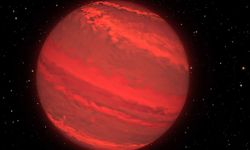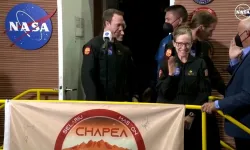NASA has selected the first science instruments to be deployed by astronauts on the lunar surface as part of the "Artemis III" mission.
The first astronauts scheduled to set foot on the Moon since the Apollo missions will be sent with a range of equipment, including a vehicle for the study of growing plants on the Moon, a water ice detector and a lunar seismometer to measure Moonquakes.
HUMAN SETTLEMENT ON THE MOON
The Artemis space mission marks the first time humans have returned to the Moon since the Apollo program ended in the early 1970s. The astronauts participating in this mission are planned to explore the Moon's south polar region. Studies on the lunar surface will contribute to the understanding of how the Moon formed and evolved, as well as the establishment of human settlement on the Moon.
ARTEMIS III AND SCIENCE GOALS
NASA has identified three key science goals for the Artemis program to return humans to the Moon:
Understanding the planet's formation processes
Understanding the character and origin of lunar polar volatiles
Investigating and mitigating exploration risks
The three devices are expected to be part of the payload of the Artemis III mission, currently targeted for launch in 2026.
Final decisions on the mission and its payload will be made at a later date.
ARTEMIS III TO TAKE 3 EQUIPMENT TO THE MOON
For the Artemis III mission, NASA has selected three instruments to be deployed near the Moon's south pole to collect scientific data on the Moon's environment, interior and how to establish human settlement.
LUNAR ENVIRONMENT MONITORING STATION
This autonomous seismometer is designed for continuous and long-term monitoring of the seismic environment on the Moon.
It is planned to study moonquakes in the south polar region of the Moon.
It was chosen following reports that earthquakes and landslides have been detected at the landing sites of future manned missions to the Moon.
The Lunar Environmental Monitoring Station (LEMS) will also provide data on the structure of the Moon's crust and mantle, which will help planetary scientists learn more about the Moon's formation and evolution.
The device is planned to operate for 3 months to 2 years, NASA said.
AGRICULTURE ON THE MOON
The 2015 US movie The Martian remains an important reference point when discussing the possibility of growing crops on a planet beyond Earth.
And in 2022, NASA announced that scientists were growing plants in lunar soil in laboratories on Earth.
But how feasible is it to grow crops on the Moon?
The Lunar Effects on Agricultural Vegetation (LEAF) is designed to delve deeper into the possibility that future lunar inhabitants could grow their own food.
It will observe plant photosynthesis, growth and how radiation and partial gravity affect plant health, which could help scientists learn more about growing and using plants on the Moon.
It could be a game changer when it comes to self-sufficiency in future human settlements on the lunar surface.
LUNAR ELECTRICAL ANALYZER
Water ice is known to exist in the shadowy craters at the Moon's south pole, and collecting this ice is seen as the key to establishing human settlements on the Moon.
This ice will not only provide a source of drinking water, but also oxygen for astronauts to breathe.
The device will collect information about the Moon's surface, monitor changes caused by the changing angle of the Sun as the Moon rotates, and look for frost or ice deposits.















